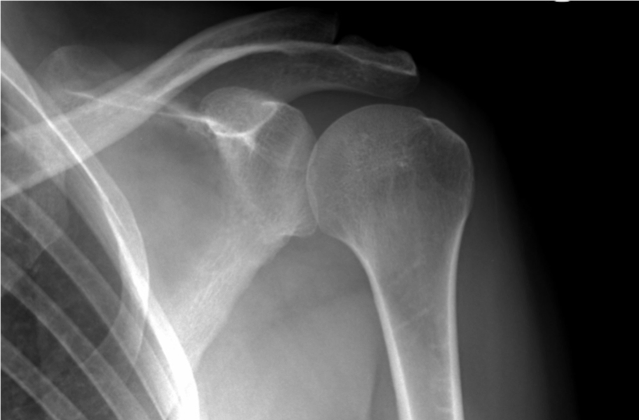
Have you ever heard of a bone condition so peculiar that its discovery is often an accident? Osteopoikilosis is a rare bone anomaly that intrigues doctors and radiologists, but surprisingly, it poses no danger to those who have it. But before discussing this interesting topic, I want to talk about something important: if you are looking to improve your posture, relieve muscle discomfort, or simply take better care of your bones and joints, there are products specifically designed for you. From posture correctors to orthopedic insoles, these tools can make a big difference in your quality of life.
ETYMOLOGY AND SYNONYMS
The name osteopoikilosis comes from ancient Greek. It consists of three fundamental roots:
· Osteo, which means "bone".
· Poikilos, which translates as "varied", "spotted", or "irregular".
· The suffix -osis, which denotes a condition or disease.
Together, the term means "spotted bone" or "varied bone", referring to the distinctive pattern seen in X-rays of affected individuals.
Among its most common synonyms we find:
· Spotted osteopathy.
· Spotted bone dysplasia.
These names reflect the main characteristic of osteopoikilosis: the presence of small, rounded, dense lesions symmetrically distributed along certain bones.
DEFINITION
Osteopoikilosis is a hereditary bone dysplasia classified within the group of connective tissue diseases. Although it is considered a rare anomaly, it has no serious clinical implications in most cases. It is characterized by the appearance of small sclerotic (dense) lesions of oval or round shape, visible on X-rays. These lesions, which are symmetrically distributed in the long bones, pelvis, hands, feet, and scapulae, do not cause significant functional alterations or transform into malignant pathologies.
In essence, it is a benign and incidental condition that does not generate complications in most patients. However, its importance lies in correctly distinguishing it from other more serious diseases, such as bone metastases or infections.

SYMPTOMS
One of the most fascinating aspects of osteopoikilosis is that in most cases it is asymptomatic. Many people do not know they have this condition until they undergo an X-ray for completely different reasons, such as a fracture or muscle pain.
However, in a small percentage of cases, the following symptoms may be present:
· Mild bone pain: Although uncommon, some people report discomfort or tenderness in the areas where the lesions are located.
· Joint stiffness: There may be a slight feeling of stiffness in the joints near the affected bones.
· Alterations associated with genetic syndromes: In rarer cases, osteopoikilosis may be linked to Buschke-Ollendorff syndrome, which includes skin lesions called elastomas. These are benign bumps on the skin formed by connective tissue.
Despite these possible symptoms, the condition does not progress and does not endanger the patient's life.
ETIOLOGY, CAUSES, AND DIAGNOSES
Osteopoikilosis is caused by mutations in the LEMD3 gene, which regulates the development of connective and bone tissue. This mutation is inherited in an autosomal dominant pattern, meaning that only one parent needs to pass on the mutated gene for a child to inherit the condition. However, genetic penetrance can vary, which explains why some individuals do not present symptoms.
DIAGNOSES
The diagnosis of osteopoikilosis is made through imaging studies, mainly X-rays. These show multiple dense, symmetrical, and well-defined lesions, ranging in size from 2 to 10 mm.
The most frequently affected areas include: Long bones such as the femur and humerus, pelvis, scapulae, small bones of the hands and feet.
It is essential to differentiate osteopoikilosis from other pathologies such as:
· Bone metastases: More irregular and not necessarily symmetrical lesions.
· Bone infections (osteomyelitis).
· Paget's disease.
In case of doubt, a magnetic resonance imaging or bone biopsy can be performed, although this is exceptionally rare.
TREATMENTS
Osteopoikilosis does not require treatment, as it does not affect quality of life or bone functionality. However, medical management includes:
· Patient education: Explaining the benign nature of the condition to avoid unnecessary concerns.
· Symptomatic treatment: In the rare cases where there is pain or stiffness, common pain relievers like paracetamol or ibuprofen can be used.
· Clinical monitoring: Only necessary if there is suspicion that osteopoikilosis is associated with more complex genetic syndromes.
In essence, the main treatment is the reassurance of the patient and ensuring it is not confused with more serious conditions that require intervention.
CONCLUSIONS AND REFLECTIONS
Osteopoikilosis is one of those medical curiosities that remind us of how complex and fascinating the human body can be. Although it may seem alarming at first glance, it is a completely benign condition that does not jeopardize health or bone functionality. Its main challenge is to diagnose it correctly to avoid confusion with serious diseases.
Brands Beybies, Pura+, and NrgyBlast belong to Avimex de Colombia SAS. All products have quality certifications and current health registrations and are manufactured under the strictest international standards. To purchase our products, you can access our Shop-On Line. All purchases are backed by a 100% satisfaction or refund guarantee.